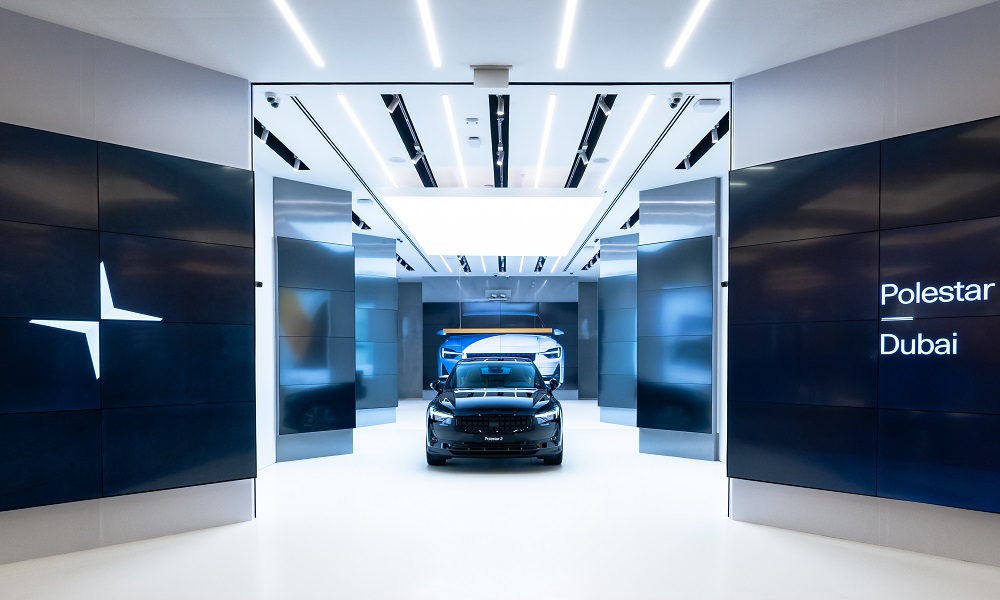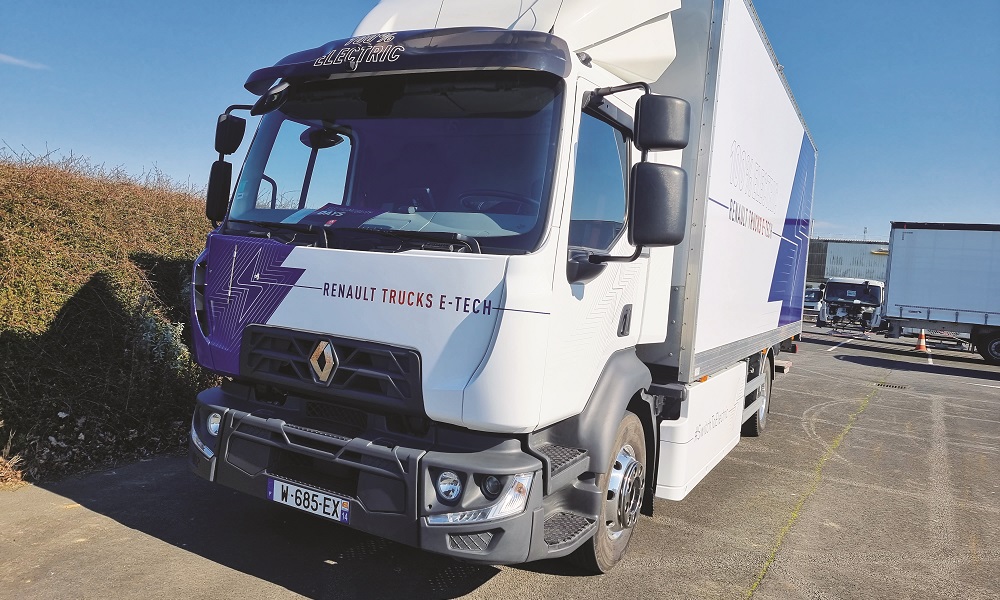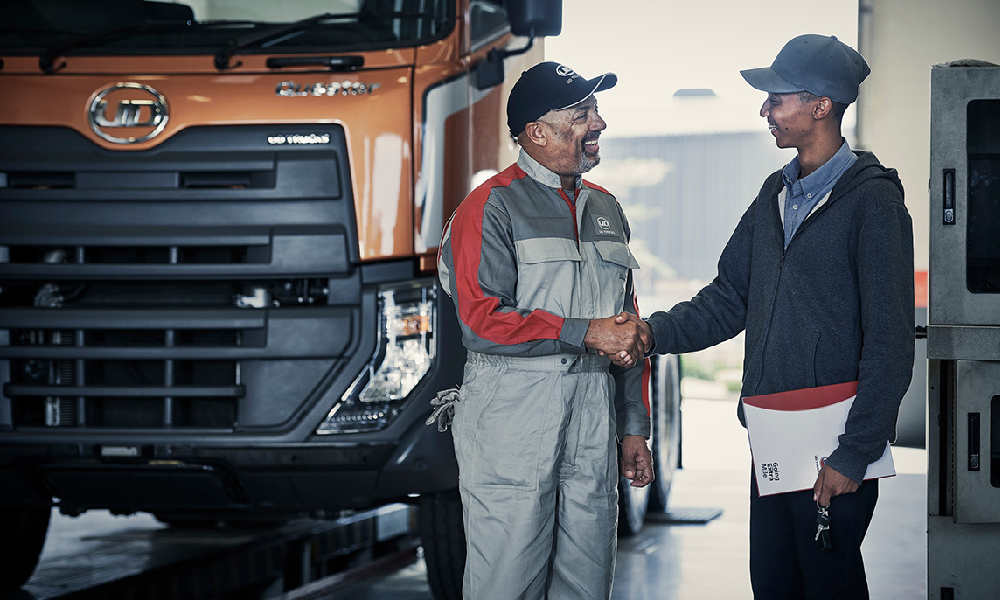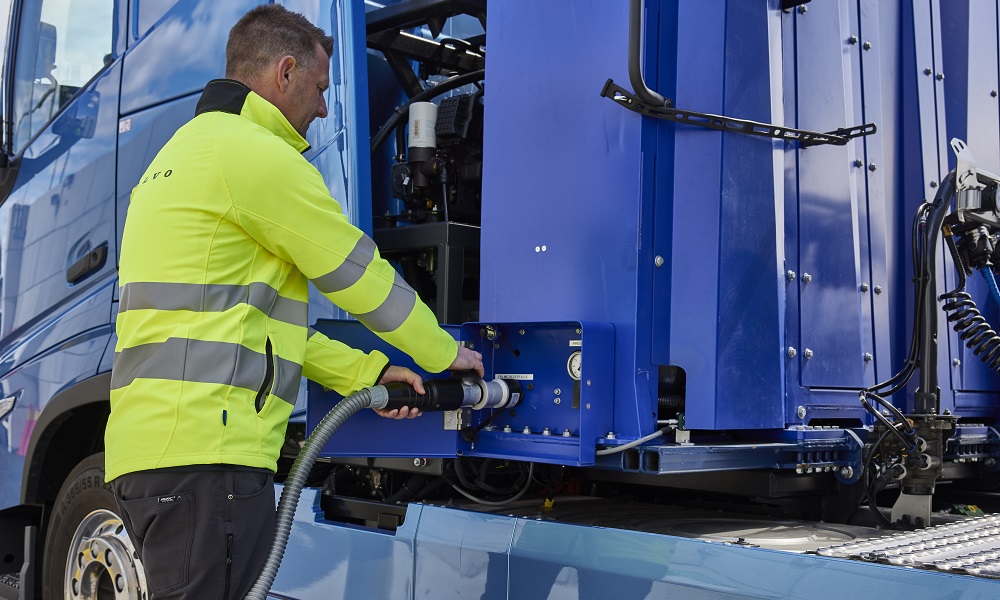MAN Truck & Bus
MAN can pull on huge reserves of talent and expertise when it comes to developing new trucks, engines and systems. Both its truck and bus arms benefit from a wide-range of technologies including electric drives. MAN has focused on allying its core strength of safe and heavy duty trucks and silky coach platforms with electric alternatives. The Truck division at MAN is now accelerating on the path to electric mobility. While the battery-powered MAN Lion’s City E urban bus and the fully-electric MAN eTGE van are already strongly represented in the market as series vehicles, the first e-truck – the MAN eTGM – has started to be delivered in small series to customers throughout Europe. Its MAN eMobility Centre has been created on the the basis for this leading commercial vehicle manufacturer to produce e-trucks in large industrial quantities.

Nissan
With the Leaf, Nissan proved to be an early electric mover in the Middle East market. It has continued to strengthen its model lineup with a suite of safety and connectivity features, factoring in the evolving needs and wants of its customers. Enhancing its offering of driver assistance and convenience features, Nissan Intelligent Mobility (NIM) delivers on a promise of safer and more connected travel. Combining the three pillars of Intelligent Driving, Intelligent Power, and Intelligent Integration, ongoing innovations in NIM play a vital role in aiding the brand achieve its goal of virtually zero fatalities involving Nissan vehicles across the globe. The ultimate expression of Nissan Intelligent Mobility and autonomous driving is evident in the new Nissan Ariya, which made its Middle East debut at Expo 2020 Dubai. ProPILOT, premiered in the region on the 2021 Nissan Altima, has been touted as revolutionising driving while offering customers peace of mind. Combining Nissan’s Intelligent Cruise Control system with Steering Assist technologies, ProPILOT automatically increases or decreases speed to maintain a set distance from the car ahead.

Polestar
Polestar, the Swedish electric performance car company, entered the market early this year via Al Futtaim in the UAE. The relatively new name belies a deft and determined ambition for the region and its next car, the Polestar 3 electric performance SUV, is expected to join the award-winning Polestar 2 later this year. Launched internationally in 2020, Polestar 2 has won several industry accolades and high praise from customers, fans and thought leaders, being hailed in the media as one of the most complete electric cars with superb build quality and futureproof design that seamlessly integrates its sustainable credentials into a world-class driving and ownership experience. Mohamed Kassem, general manager for Polestar in the UAE, says: “Polestar 2 is the car that the future promised.”
 Renault Trucks
Renault Trucks
Renault is taking a very practical approach to the adoption of electric variants of its trucks in Europe and is offering fleets there step-by-step help, including the project management of charging infrastructure in hubs and optimisation of routes advice. Its helped make it the number one supplier of electric trucks in Europe and bodes well for a company that has been known for its robustness and customer-centric in the past and wants to see how it bring its loyal base with it. The firm started investing in e-mobility ten years ago, convinced that it was the answer to the problem of air quality and noise pollution in urban areas. Today, it is the first to mass-produce fully-electric trucks. Its E-Tech range extends from 3.1t to 26t and meets all urban requirements from delivery and distribution of goods to waste collection. Renault Trucks’ steadily expanding range of electric trucks and its sales volumes reflect its rapid progress: in 2021, 249 electric trucks were delivered and 613 were ordered. It is now stepping up its strategy and increasing its ambitions and plans for 50% of its sales to be electric by 2030. By 2040, 100% of the vehicles sold will be fossil free.

Tesla
The original electric disruptor to the car market has been quiet on its truck alternatives in recent years but it is still committed to getting its hauler, the Semi out into the market. Of course, beyond the electric drivelines, the big promise of autonomy is both the US firm’s strength and weakness. Tesla’s vehicles are equipped with autopilots which allow the car to steer, accelerate and brake automatically. The Tesla fleet is available with the tech that allows the vehicles to auto-park and undertake automatic lane changes. However, it hasn’t been without its issues and incidences where drivers have overestimated the capability of its Level 2 autonomous vehicles. It remains the badge most identified with the future, and you can hope it will come good on its promise to use technology to make professional driving safer and more efficient. Hopefully it won’t be long before we can all tweet or play Sonic while we work (and not drive).

Scania
Few companies, even within the Traton camp, can match Scania’s work in the field of alternatives to fossil fuels in a huge variety of transport applications. Want hydrogen, check. Interested in electric, check. Fancy a hybrid, well, check. Scania wants to drive the transition to zero emission vehicles and is already series-producing fully electric vehicles and actively testing heavier duty electric trucks in customer operations. This transformation is being enabled by rapid improvements in battery technology, and electric trucks will soon have the range necessary for widespread use in long-haul applications. Early this year, it also revealed it is working on a project to develop an initial 20 fuel cell electric trucks with Cummins Inc, that will run on green hydrogen in HyTrucks project. “Our strategic work is dependent on understanding our impact, including the risks and opportunities along the life cycle, with the ambition of linking targets and actions with science. We have identified three key sustainability areas that need to permeate all parts of our business: people sustainability, circular business and decarbonisation. Each of these areas are connected and dependent upon each other,” says the company.

UD Trucks
UD Trucks has been tackling the problems of driver recruitment and retention for years in its native Japanese market and sees the solution through smart logistics to make the industry more attractive and profitable. Its Fujin & Raijin Vision 2030 focuses on the key areas of automation and electromobility to address the challenges of a rapidly-changing world. True to UD Trucks’ vision to provide the trucks the world needs today, the roadmap aimed to offer commercialised solutions for select automation and electromobility applications from 2020, with a view toward full-fledged commercialisation by 2030. By then, demand for parcel delivery is expected to grow 50% compared to 2014. To meet this demand, the logistics industry faces significant challenges, including a responsibility to reduce CO2 emissions, the growing scale of online commerce, and driver shortages. UD Trucks believes that automation and electromobility are key to overcoming these challenges: “We are convinced that the world needs Smart Logistics,” said then chairman Joachim Rosenberg at the roadmap’s launch in 2018. He now heads Volvo Energy – but more on that later.

Volta Trucks
One of a batch of new names in the commercial vehicles sector that are trying to raise funding to get into the market, it has at least has got to the stage of getting its trucks into customer hands. Its Volta Design has just completed a round of testing in France with feedback suggesting positive first experiences of the zero-tailpipe emission medium-duty truck designed for urban logistics. Production Verification prototypes are being loaned to customers for extended periods later in 2022, enabling them to understand how full-electric medium-duty trucks will integrate into their operations. Production of the first customer-specification vehicles is still on track to start in early 2023. And sensibly the Swedish firm has placed former Agility head Essa Al-Saleh as its CEO to ensure its sales pitch is just right for a traditionally sceptical fleet market.

Volvo Trucks
Volvo may have only formed its mobility arm Volvo Energy in 2021 but it has been working on autonomous systems, as well as electric and hydrogen drivelines for years. Today, it offers electric vehicles and machine ranges from city buses and trucks for waste management, construction and urban distribution to compact excavators and loaders. The roll-out of additional, electric vehicles and related services has continued at high pace and Volvo Trucks wants half of all trucks sold to be electric by 2030. With the creation of Volvo Energy it wants to provide batteries and charging across the industry. It is also carrying the Group’s responsibility for hydrogen infrastructure solutions for fuel cell electric vehicles. Collaborations with various business partners and actors across the ecosystem will be key. “There is a great and growing interest for EVs among our customers. This is very positive as it accelerates the transition towards more sustainable transport solutions. Our ambition is to offer the most competitive solutions when it comes to electrification. With Volvo Energy, we are taking a holistic view of the entire life cycle, which benefits both our customers’ business and society as a whole”, says Martin Lundstedt, President and CEO.

ZF
Determined to prove that it is ready for a new era in transportation ZF has been assembling prototype vehicles that show-off its capabilities in trailers, axles, all electric drives and PTO systems in recent years. Autonomous driving is expected to become more widely established in the commercial vehicle sector as well as in urban passenger transport; and ZF can equip light and heavy vehicles with its AD system and thus transform them into automated machines. And ZF is also active in the developing People Mover market. ZF took over 100 percent of the Dutch company 2getthere, which has many years of experience with autonomous driving systems – as 14 million transported passengers and more than 100 million autonomously driven kilometers impressively attest. ZF is currently developing autonomous shuttles for the German cities of Friedrichshafen and Mannheim as part of the RABus project . And in the Rivium Business Park near Rotterdam, where the 2getthere autonomous shuttles have been in operation for years, they are being updated with the latest version. “Our vision is that autonomous mobility will improve traffic conditions in cities and reduce congestion and emissions,” said Torsten Gollewski, EVP, Autonomous Mobility Systems, ZF. A network of autonomous and electric shuttles can meaningfully supplement the existing public transport service in cities and efficiently link rural areas to cities.











